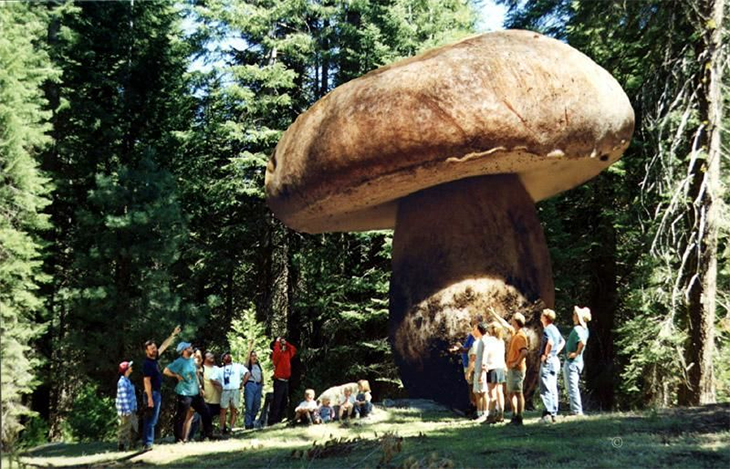
If we travel back 450 million years to the Ordovician Era, our net would capture the ancestors of millipedes and worms, but no other significant organisms. Yet, an intriguing sight would greet us.
The landscape would be dominated by 29-feet-tall (8m) trunks devoid of branches and leaves, towering over newly-evolved vascular plants.
These peculiar trunks, discovered as fossils worldwide, are now widely believed to be mushrooms. These are enormous fungal structures that mark the first appearance of giant land organisms from the kingdom of fungi.
The concept of a “fungal forest” often finds its way into fantasy and science fiction writing. Mushrooms, for various reasons, captivate the human eye and imagination. From Super Mario’s adventures in a mushroom-powered world to the stunning visual art in James Cameron’s Avatar, why settle for trees when mushrooms offer an alternative?
In 2008, a significant trunk-like fossil was unearthed in Saudi Arabia. This fossil, known as Prototaxite, provided further evidence supporting the hypothesis that these enigmatic ancient structures are indeed mushrooms. Since its initial discovery in 1843, Prototaxites has been labeled as lichens, algae, trees, and even rolled-up mats of liverworts that fossilized over time.
However, specific characteristics have consistently led scientists, including C. Kevin Boyce, a geophysicist at the University of Chicago, who has authored multiple papers on Prototaxites, to lean towards the theory that these structures were fungi.
“A 6-meter-fungus doesn’t make any sense, but here’s the fossil,” he said New Scientist in 2007. “No matter what argument you put forth, people say it’s crazy.”
They consist of slender, tube-like structures with a diameter ranging from 20 to 50 microns, intricately intertwined with each other. Additionally, there are even thinner filaments present, characterized by inner perforated walls, a unique feature observed exclusively in red algae and fungi.

Another aspect to consider is the carbon content of these plants. In the same time period, atmospheric CO2, which consists of carbon-12 and carbon-13 molecules, should be consistent across all living plants. However, Prototaxites stands out in this regard, as its carbon composition differs from that of other plants that existed during the immediate stage of the Ordovician Era.
What’s truly fascinating is that even in this distant past, paleobotanists have managed to identify interactions between the colossal fungal towers and their surroundings. They have discovered that the mycelia of Prototaxites, the thread-like root structures of a fungus, infiltrated the tissues of nearby vascular plants. Additionally, some of the spire fossils have been found to contain bio-molecules commonly associated with algae, implying that Prototaxites might have been subjected to parasitism.
The mere thought of a world where towering fungi overshadowed forests of moss, lichen, and the earliest plants is astonishing. The entire landscape would have appeared remarkably miniature in comparison.
Now, if only one could travel back in time and see what earth would have been like covered in towering mushrooms instead of trees. It would have been a site to behold.
What are your thoughts? Please comment below and share this news!
True Activist / Report a typo


